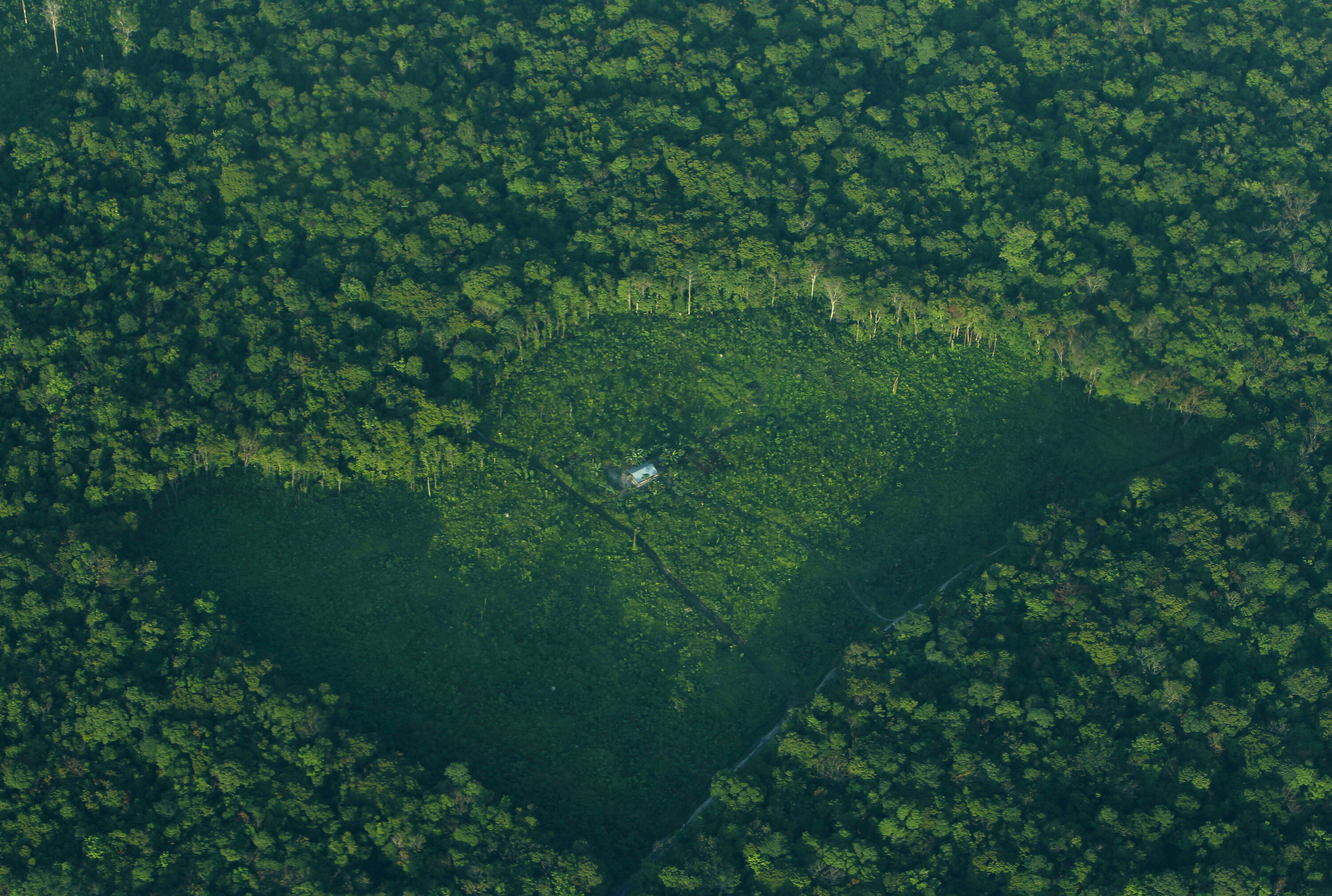These are the people protecting biodiversity on the top of the world
A conservation network is being formed along the Tongtianhe Valley by villagers and local authorities.
Image: REUTERS/Navesh Chitrakar
Stay up to date:
Future of the Environment
It was a chilly February day. Dangwen and his wildlife monitoring team patrolled along the upper reaches of the Yangtze River. The river was frozen solid, easy for poachers to walk over.
That day, they encountered 220 blue sheep, five white-lipped deer, and a line of otter footprints. On the infrared camera traps that they had set up throughout the valley, three snow leopards appeared, a mother and two cubs – and the cubs had grown much bigger than three months earlier.
Dangwen comes from Yunta, a village located in Sanjiangyuan, Qinghai Province on the Tibetan Plateau. Sanjiangyuan, is a 400,000 km² area that serves as an important habitat for rich and unique biodiversity and a watershed of the three largest rivers in Asia, the Yellow, Yangtze and Mekong, which serve a billion people downstream.
Dangwen isn’t officially a researcher or an activist. But he has taken upon himself the task of monitoring local wildlife with a team of other villagers, as part of a conservation project driven by the Shanshui Conservation Center, a Beijing-based non-governmental organisation
A pilot village for conservation
A mining company attempted to prospect the area almost a year before wildlife monitoring in the region started. The villagers were deeply disturbed because mining the mountains would go against the spiritual values of Tibetan Buddhism and threaten their safety.
So, when the Shanshui NGO proposed in 2013 the idea of organising villagers to monitor wildlife and protect their lands, Dangwen volunteered without hesitation. Having grown up in the village, he is very familiar with the land, the river and the wildlife, and he is especially proud of the sacred mountains that surround all of them. This is the fourth year that Yunta villagers have carried out this monitoring, patrolled the village to spot poachers, and managed rubbish to keep the land and rivers clean.
Monitoring data shows that local wildlife populations, including snow leopards, are increasing. The villagers’ conservation conduct is officially authorised by the local government – their stories have been reported by China Central Television – and the mining company never returned.
An inspiration for the Tibetan plateau
Inspired by Yunta, four neighbouring villages began their own wildlife monitoring and anti-poaching patrols. With encouragement from local authorities, a village-based conservation network is being formed along the Tongtianhe Valley.
Recognised as a conservation priority in China, the Sanjiangyuan National Nature Reserve was set up in 2003 and designated a national park in 2016. But the area faces big conservation challenges: government agencies have limited manpower to manage this vast area and grazing rights to all its grasslands were given to households in the 1990s.
This means that conservation in Sanjiangyuan would not be possible without support from local Tibetan communities. As Buddhists, these communities embrace the value of respecting nature and caring for other living beings. Their system of sacred lands is very similar to modern protected areas.
That makes them natural allies for conservation. Yunta’s experience has proven that, with proper training, villagers can become very qualified conservationists. Essentially, they are providers of ecological services and should receive benefits from conservation in return.
Based on this experience, a policy recommendation was made to the government, and the newly designated Sanjiangyuan National Park quickly responded.
A total of 16,400 jobs as guards, with monthly salaries of 1,800 yuan (about US$260), are to be offered to villagers living inside the park (one per household). The next step is to explore the possibility of reducing grazing in key habitats to allow wildlife – especially large carnivores such as snow leopards – to increase, and to slow down grassland degradation.
Protecting animals and humans
The Tibetan Plateau is the last place in Asia that still maintains a relatively intact ecosystem where large carnivores and ungulates, many unique to the region – such as the snow leopard, the Tibetan brown bear, the Tibetan antelope, the wild yak, the Tibetan wild ass, the Tibetan gazelle, and the blue sheep – roam freely.
Maintaining this vast ecosystem is challenging because its population of pastoralists is rapidly increasing. The human population of Sanjiangyuan has doubled since 1980.
Meanwhile global climate change may have added to pressures on the grassland. Is it possible, under these conditions, to protect the ecosystem successfully while supporting the cultural and economic well-being of Tibetan communities?

After three decades of fast economic development, and demands by the Chinese people and government, a better environment is becoming a higher priority. Several large ecological programs have been initiated – perhaps among the largest financial schemes in the world – to pay for protecting and restoring forests, grasslands and wetlands, though their effectiveness could be improved by more scientific planning and participation.
The call for nature education from citizens, especially parents, is rapidly growing, and this has generated broad concerns over ongoing ecological degradation. Public participation in conservation is now protected by environmental laws. Political will, the interests of society, and traditional values are all coming together.
This makes us believe that co-existence between humans and nature is not just wishful thinking. Yunta offers a strong starting point.
Accept our marketing cookies to access this content.
These cookies are currently disabled in your browser.
Don't miss any update on this topic
Create a free account and access your personalized content collection with our latest publications and analyses.
License and Republishing
World Economic Forum articles may be republished in accordance with the Creative Commons Attribution-NonCommercial-NoDerivatives 4.0 International Public License, and in accordance with our Terms of Use.
The views expressed in this article are those of the author alone and not the World Economic Forum.
Related topics:
Forum Stories newsletter
Bringing you weekly curated insights and analysis on the global issues that matter.
More on Nature and BiodiversitySee all
Marco Lambertini and Marcelo Bicalho Behar
November 6, 2025
Tom Crowfoot
November 5, 2025
Laura Fisher, David Mueller and Anika Duggal
November 5, 2025
Gill Einhorn and Jack Hurd
November 5, 2025
Network of the Global Future Councils and Kaiser Kuo
November 4, 2025





